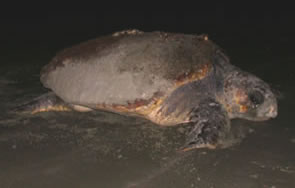
Caretta caretta
Photo by M. Dorcas
Description: Loggerheads are primarily reddish-brown in coloration and have large heads with powerful jaws. They also often have barnacles and other organisms attached to their shell. Males differ from females in having narrower shells and longer/thicker tails. Young loggerheads have a more brownish colored carapace (top of shell) and a tan plastron (bottom of shell). Loggerheads range between 31 and 45 inches (79-114 cm) in carapace length and 170 to 350 pounds (77-159 kg) in weight.
Feeding/Diet: Loggerheads are omnivorous and feed primarily on marine invertebrates.
Activity/Behavior: Loggerhead turtles are active during the day. Because they frequently are close to shore during summer months, they often drown in nets of commercial fishing boats.
Habitat/Range: The loggerhead is found in the ocean. During summer months it ranges closer to the coast and sometimes accidently wanders into freshwater habitats.
Reproduction: This species regularly nests along the coast of the southeastern United States. Nesting period extends from the middle of May until late August. Clutches have been found to contain between 47 to 220 eggs, with an average of 120 eggs.
Miscellaneous: The loggerhead is listed as a threatened species by the U.S. Fish and Wildlife Service and is protected by law.
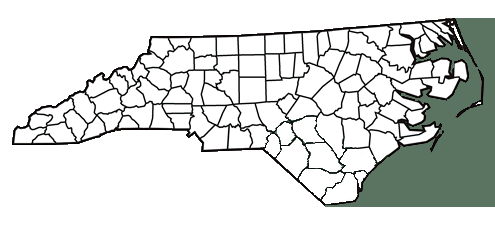
The shaded region represents the range of the loggerhead sea turtle in North Carolina.
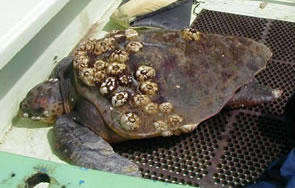
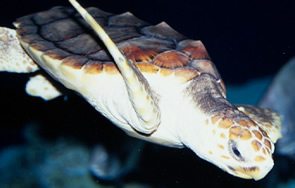
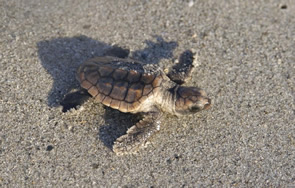
Photo by C. Hagen
Photo by V. Van Dyke
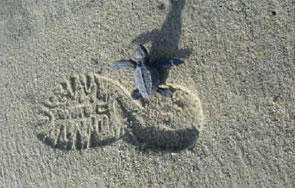
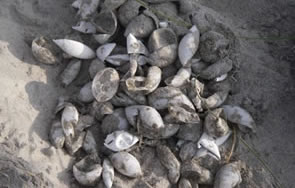
Loggerhead egg shells are counted by researchers after babies have hatched.
Photo by J. Willson
